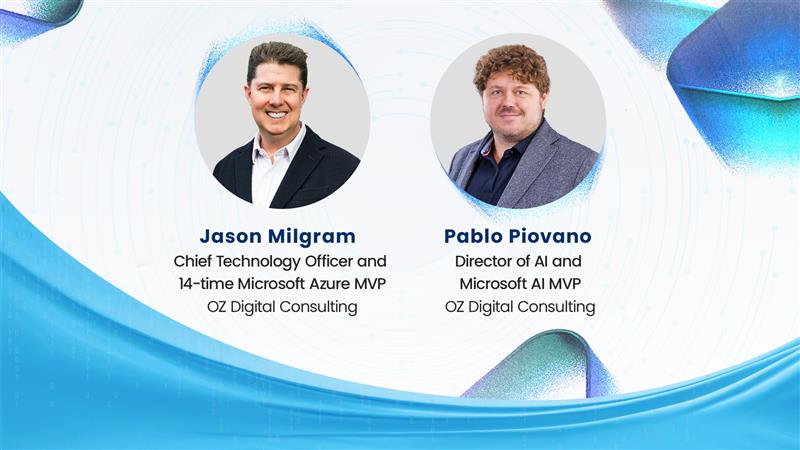— By Murray Izenwasser, SVP, Digital Strategy
Underwriting is undergoing a significant transformatInsurance ion thanks to new technologies like artificial intelligence (AI) and machine learning (ML). For decades, underwriters relied solely on historical data to assess risk and determine coverage. But in today’s rapidly changing world, historical data is no longer enough.
To stay competitive, underwriters now need to leverage AI and ML to unlock deep insights from both structured and unstructured data. These technologies allow underwriters to identify risks earlier, price policies smarter, and operate more efficiently.
AI and ML are revolutionizing underwriting across three key areas: automating repetitive tasks, generating real-time insights, and evolving the underwriter’s role. With intelligent automation, underwriters can reduce costs, improve customer satisfaction, and adapt to changes faster. The future underwriter will act as custodian, integrator, and collaborator to drive even greater value.
Underwriting Modernization
Insurance companies have been working to automate repetitive underwriting tasks for many years. But new technologies like robotic process automation (RPA), artificial intelligence (AI), and machine learning (ML) are taking underwriting automation to the next level.
RPA tools can be programmed to handle high-volume, rules-based underwriting workflows. This includes gathering data from multiple sources, filling out application forms, verifying information, and routing tasks.
By automating these routine processes, RPA systems free up underwriters to focus on complex decision-making. This improves efficiency and allows underwriters to process more policies faster.
AI and ML inject intelligence into automation by enabling systems to learn, improve, and make complex choices over time. AI can extract insights from text while ML detects patterns in data that humans might miss.
Used together, these technologies can replicate underwriter expertise at scale in numerous areas:
- Data Collection: Collect diverse data from both structured and unstructured sources to gain a comprehensive view of risk factors. By incorporating real-time data from multiple channels, underwriters can stay on top of emerging exposures.
- Insights: Generate insights from large volumes of data quickly using AI and machine learning. By detecting patterns and correlations, underwriters can better predict potential losses and model risks.
- Risk Selection: Make informed risk selection and pricing decisions tailored to specific cases using granular, AI-enhanced metrics. Automated risk rating incorporates more variables for more accurate coverage and premiums.
- Automating Workflows: Streamline routine tasks like application processing and renewals with conversational AI chatbots. Automating high-volume, repetitive workflows improves underwriter productivity and customer satisfaction.
- Behavioral Analysis: Identify potential misrepresentation and fraud earlier using AI-enabled behavioral analysis techniques. Advanced analytics improve underwriting accuracy and efficiency from the initial review stage.
By streamlining repetitive tasks with intelligent automation, underwriters gain the capacity to focus on higher return tasks, operate more nimbly, and drive greater value.
The Exponential Underwriter
Advances in automation are changing the role of the underwriter. With the help of new technologies, underwriters are evolving into “exponential” professionals who can drive greater value. Deloitte calls this the rise of the exponential underwriter—“a multi-skilled professional leveraging new data sources and emerging technologies to be more efficient and proactive in defining future organizational processes.” Intelligent automation empowers underwriters to become “exponential”— adding more value than ever.
Intelligent automation systems powered by AI and machine learning handle many of the routine, time-intensive underwriting processes including:
- Parsing insurance applications
- Assessing straightforward risks
- Screening applicant information
- Evaluating recommendations provided by underwriting software
- Gathering information from field staff
- Determining premium coverage
Adding AI not only changes the speed at which it’s done but changes the scale at which it’s managed. In fact, an Accenture study found that tech-enabled underwriters can perform higher-value tasks and perform better. The exponential underwriter can:
- Complete complex risk assessments
- Evaluate ambiguous or borderline cases
- Make pricing decisions on non-standard policies
- Identify cross-selling opportunities
- Produce quicker turnaround on more standard quotes
- Access knowledge for risk-based decision making
- Rate and price risk better
- Retain existing policyholders
The exponential underwriter will act as a conductor of the underwriting orchestra—leveraging automation while focusing on high-impact areas to drive greater strategic value. AI will help underwriters predict and price risk more accurately, identify operational issues or opportunities in real-time, and make more and better-informed decisions. Currently, only 30% of an underwriter’s time is spent assessing risk. The rest of the time is spent collecting, combining, and reviewing documentation for submission. New tech will free up their time enabling them to focus on high-value cases that need human insight and decision making.
The Future of Underwriting
Underwriting is undergoing a transformation driven by new technologies like automation, AI, and advanced analytics. While machines will handle routine tasks, the underwriter’s role will evolve.
Rather than focusing on specific policy transactions, future underwriters will be custodians of the entire underwriting process. They will oversee and optimize systems that integrate data, analytics, and software recommendations to produce accurate quotes at scale.
Underwriters will become integrated P&L professionals—using technology to underwrite policies in a way that balances risk and revenue judiciously. They will collaborate with systems and tools that enhance their capabilities.
This new, exponential underwriter will complete policies quickly, accurately, and cost-effectively by conducting sophisticated risk assessments augmented by automation. Underwriting will remain human-centered but enhanced by technology.
By embracing the possibilities of future tech, underwriters can focus on high-value analysis while systems automate the rest—driving growth, mitigating risk, and exceeding customer expectations.
Contact us if you would like to learn more about how intelligent automation can drive underwriting transformation.



